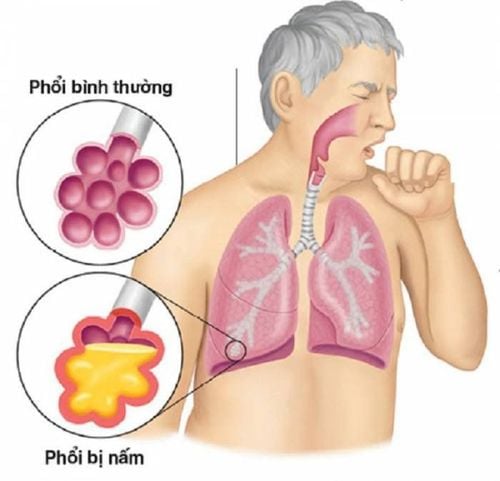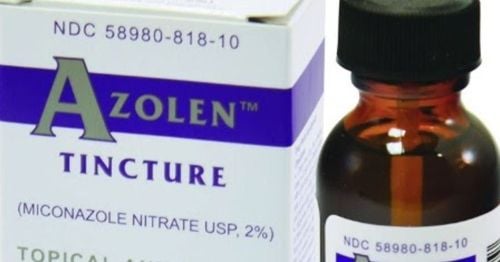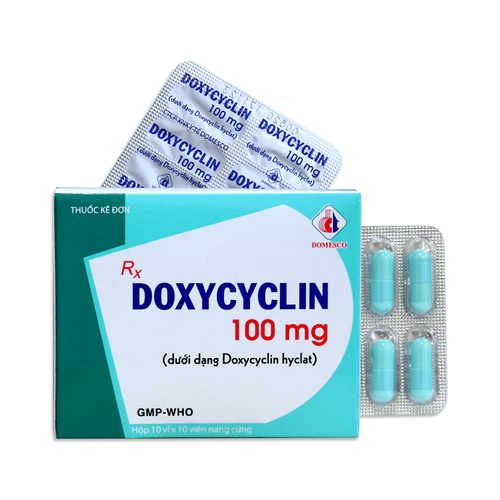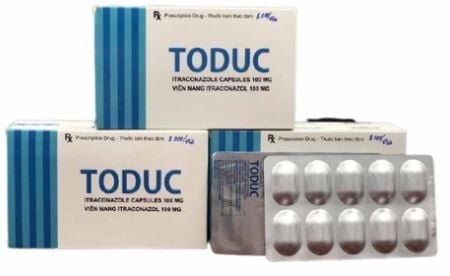This is an automatically translated article.
People living with HIV/AIDS still have many opportunities for a healthy life. However, for these people there may be some health challenges that are avoiding infection. Patients with HIV/AIDS have weakened immune systems, which increases the risk of fungal infections (opportunistic infections).
1. Overview of HIV and fungal infections
Some of the first signs that HIV/AIDS started in the United States was a cluster of 5 cases of fungal pneumonia called PCP in California in 1981. Before antiretroviral treatment, Opportunistic and fungal infections are a big problem for people with HIV/AIDS. After antiretroviral therapy, the number of fungal infections and deaths from fungal infections in HIV-infected people is significantly reduced. For example, one study found that the incidence of cryptococcal disease in AIDS patients dropped by about 90% in the 1990s. The reduction in opportunistic infections is mainly due to antiretroviral therapy (ART) that helps keep people living with HIV. to the stage when their immune systems are most susceptible to fungal and other infections. Even so, fungal diseases are still a concern for people with HIV/AIDS.
2. Some common fungi in people with HIV/AIDS
People with HIV have fungal infections that are common and can present at different stages of the disease. It can range from the earliest acute stage to the later stage when AIDS is identified. Some fungi are common in people with HIV, such as:
2.1. Candida
Candidiasis is caused by a type of yeast called Candida. Infections are most common in the mouth and vagina (especially in people with HIV).
When it shows up in the mouth like thrush, it is usually characterized by thick, white patches on the tongue and other parts of the mouth and throat. When it presents in the vagina as a yeast infection, it is distinguished by thick, pus-like patches.
When the disease spreads to the esophagus, bronchi, trachea, or lungs, the infection is considered serious and is classified as an AIDS-defining condition in HIV-infected people with thrush.
Symptoms of candidiasis include: White patches inside the mouth, throat or upper tongue; Sore throat and change in taste; Chest pain and difficulty swallowing associated with esophageal candidiasis; Vaginal itching, burning, and white discharge characterize vaginal thrush.

Bệnh nấm candida thường gặp ở người nhiễm HIV
2.2. Cryptococcosis
Cryptococcosis is a fungal disease that potentially kills more than a million people worldwide each year. In people with HIV, it can often progress to a condition called cryptococcal meningitis, which affects the central nervous system and is a common complication in people with AIDS.
The pathogenic fungus C. neoformans or C. gatti, is found in soil with bird droppings. The route of infection is through the respiratory tract of fungal spores.
Extrapulmonary cryptococcosis (including cryptococcal meningitis) is classified by the Centers for Disease Control and Prevention (CDC) as an AIDS-defining disease in people with HIV.
Symptoms of cryptococcal meningitis include: Fever; Blurry vision with photophobia (deep sensitivity to light); Psychosis; Headache; Stiff neck, neck pain
2.3. Histoplasmosis
Histoplasmosis is caused by a common fungus, H. capsulatum, which can frequently be found in the feces of snakes, droppings of birds and bats. The infection is known to be common in the eastern and central United States (as well as Africa, Southeast Asia, Southern Europe, and Central and South America). Although most people affected will experience only mild, flu-like symptoms with no long-term effects, in people with HIV histoplasmosis can develop a chronic lung infection similar to the disease. TB. It can spread rapidly beyond the lungs and affect multiple major organs, most commonly in HIV-infected patients with CD4 counts below 150. Histoplasmosis has therefore been classified by the CDC as an AIDS-defining condition in HIV-infected people.
Symptoms of histoplasmosis include: Fever; Swollen lymph nodes; Cough; Shortness of breath; Weight loss.
2.4. Coccidiomycosis
Coccidioimycosis is caused by the fungus C. immitis or C. posadaii. It widely affects residents of the southwestern United States, including Texas and southern California, as well as northern Mexico, Central America, and South America.
Like cryptococcosis, coccidiomycosis is transmitted by fungal spores found in soil, airborne, and inhaled into the lungs. Symptoms are usually long-lasting and relatively mild. However, when the infection spreads from the lungs to other organs, it is considered an AIDS-defining condition, leading to a host of serious illnesses such as: skin ulcers, meningitis, bone damage, and inflammation of the heart. .
Symptoms of Coccidioidomycosis include: Fever; Headache; Cough; Shortness of breath; Muscle pain; Tired.
3. What to know about fungal infections in people with HIV/AIDS
CD4 count is important. Patients with HIV are most at risk of getting a fungal infection when your CD4 count is below 200. Keeping your CD4 count above 200 can help prevent serious illness. Antiretroviral therapy (ART) is important. Starting ART helps slow the progression of HIV and can reduce the chance of getting a fungal infection. Fungal infections can range from mild to life-threatening. Some fungal infections are mild skin rashes, but others can be fatal (like fungal meningitis). So it's important to seek treatment as soon as possible to try to avoid a serious infection. A fungal infection can look like a bacterial or viral infection. Ask your doctor to check for a fungal infection and to take medication to fight the infection.

Nhiễm nấm nhẹ thì ngứa, ghẻ ngứa, nặng có thể ảnh hưởng đến tính mạng
4. Preventing fungal infections in people with HIV/AIDS
Fungal infections are difficult to avoid because they are a natural part of the environment. Fungi live outdoors in soil, on trees, plants and other vegetation. They're also on many surfaces in your home and on your skin. However, there can be some ways to reduce your risk of getting a serious fungal infection, like:
Learn about fungal infections. Learning about them can help you recognize early symptoms, which can prevent serious illness. Learn about the risk of fungal infections. The risk of getting a fungal infection can vary depending on the location and number of CD4s. Use antifungal medication. Your doctor may prescribe medication to prevent fungal infections. For example, your doctor may recommend medication (TMP-SMX, also known as Bactrim, Septra, or Cotrim) to prevent a type of fungal pneumonia called Pneumocystis jiroveci pneumonia (PCP). Try to avoid areas with a lot of dust such as construction sites, areas for raising livestock and poultry... To register for examination and treatment at Vinmec International General Hospital, you can contact Contact Us nationwide, or register online HERE
References: cdc.gov, verywellhealth.com
MORE
Mold allergy: Symptoms, diagnosis and treatment Diagnosis and treatment of lung fungus Nail fungus: Causes, symptoms, diagnosis and treatment













